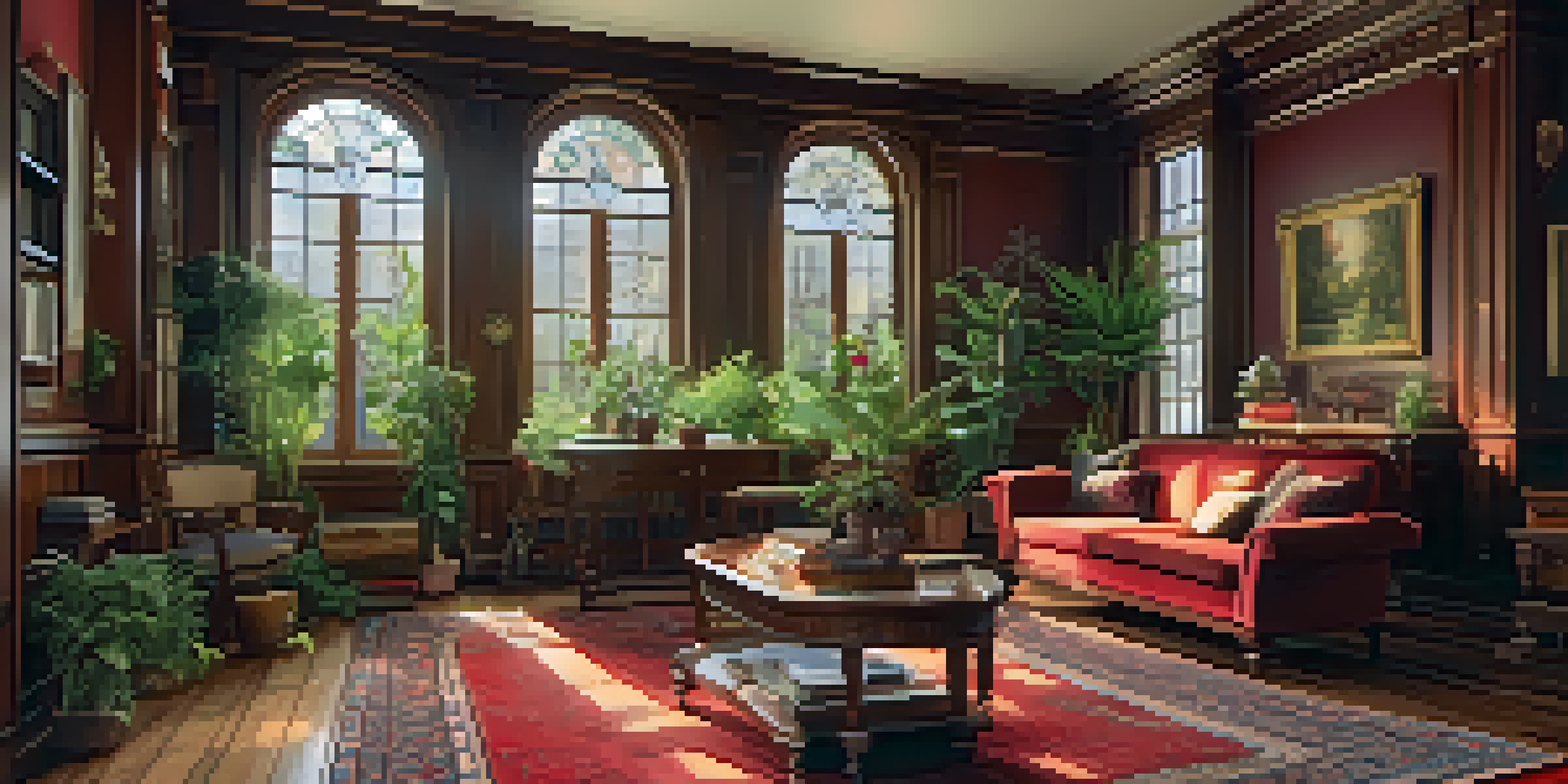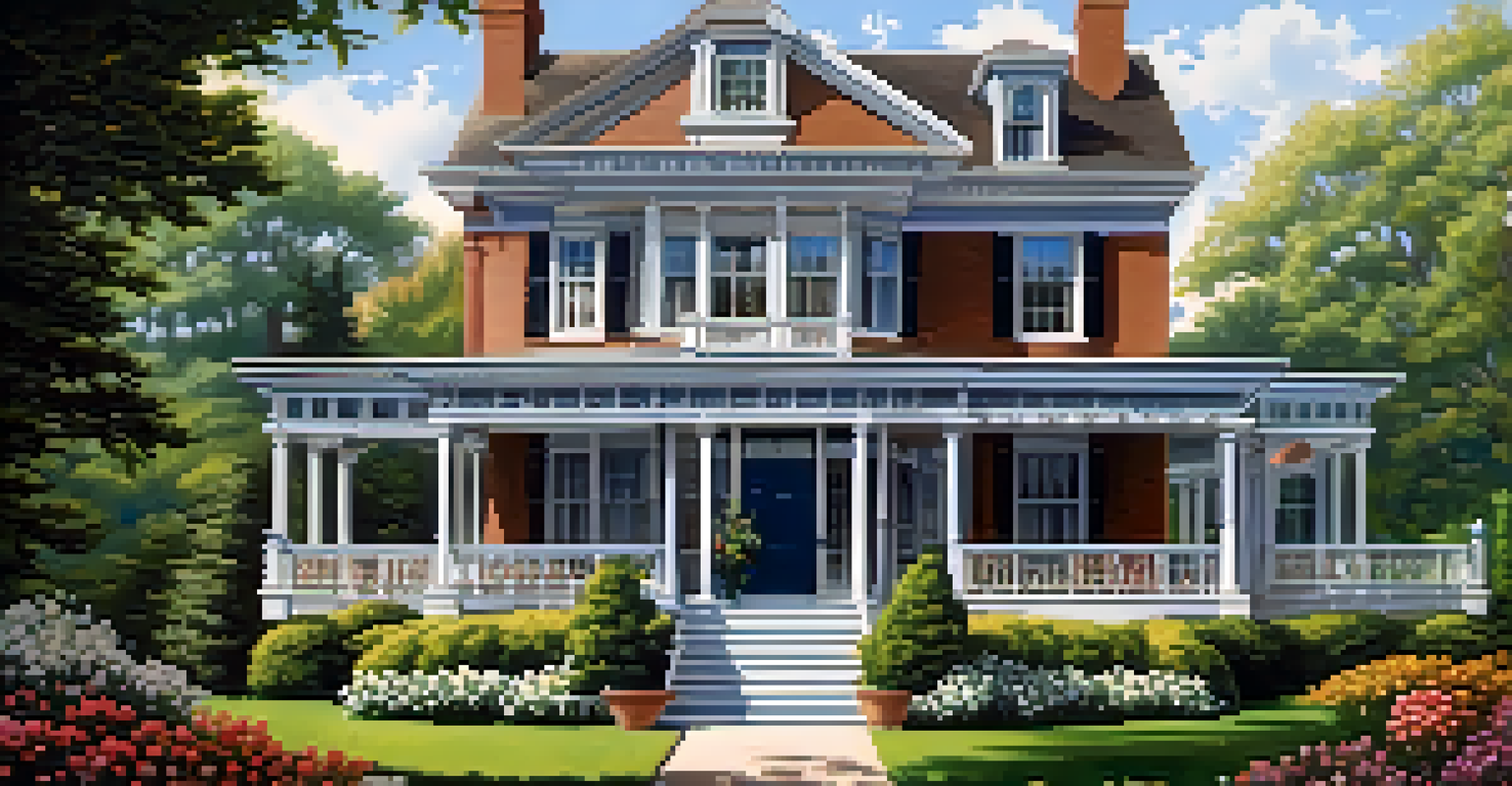The Psychological Impact of Living in a Historic Home

The Connection Between Home and Identity
Living in a historic home often creates a unique connection between the residents and their living space. These homes carry stories and histories that can shape our identity, making us feel part of something larger. When you walk through the original doors or touch the historic woodwork, it’s as if you’re stepping into a narrative that spans generations.
A house is made of walls and beams; a home is built with love and dreams.
This connection can foster a sense of belonging, as residents may feel they are caretakers of the past. It adds layers to their personal history, intertwining their lives with those who lived there before them. Many people find that this sense of shared experience enhances their self-perception, making them feel more grounded and connected.
Moreover, the aesthetic beauty and craftsmanship of historic homes can elevate our mood and inspire creativity. Just imagine how the intricate details of a Victorian-era house can spark your imagination or the elegant lines of a mid-century modern home can bring a sense of calmness. The environment we live in can significantly influence how we see ourselves and our place in the world.
Nostalgia and Historical Value
Nostalgia plays a powerful role in how we perceive historic homes. For many, these houses evoke memories of a simpler time, or perhaps they remind us of family stories passed down through generations. This emotional resonance can provide a comforting backdrop for daily life, offering a sense of warmth and familiarity.

Additionally, living in a historic home often involves a deep appreciation for craftsmanship and architectural details. This appreciation can lead to a greater understanding of history and culture, enhancing our emotional connection to the community. By preserving these homes, we also preserve the stories and values they represent.
Historic Homes Shape Identity
Living in a historic home fosters a unique connection to the past, enhancing residents' sense of identity and belonging.
As residents find joy in the quirks and imperfections of their historic homes, they often develop a unique relationship with their environment. This connection can lead to a greater sense of pride and responsibility towards maintaining and preserving history, further enriching their emotional experience.
Social Connections and Community
Living in a historic home can significantly enhance social connections with others in the community. People often feel a shared bond with neighbors who also value the history and charm of their residences. This creates opportunities for engaging in local events, preservation efforts, and even informal gatherings, fostering a strong sense of camaraderie.
Architecture is the learned game, correct and magnificent, of forms assembled in the light.
Moreover, historic homes tend to attract individuals who appreciate similar values, creating a community centered around mutual interests. This can lead to friendships that are deeply rooted in shared experiences and a common love for history. It’s not uncommon for residents to bond over the challenges and joys of maintaining their homes, creating lasting connections.
These social interactions can provide emotional support and a network of resources, enhancing overall well-being. The feeling of being part of a community that cherishes its past can lead to a greater sense of purpose and belonging, which is vital for mental health.
Coping with Maintenance Challenges
While living in a historic home can be rewarding, it also comes with its fair share of maintenance challenges. Older properties often require more upkeep than modern homes, which can be a source of stress for residents. From repairing aging infrastructure to maintaining historical accuracy, these responsibilities can feel overwhelming at times.
However, tackling these challenges can also foster resilience and problem-solving skills. When homeowners confront issues like a leaky roof or drafty windows, they often learn to appreciate the process of restoration. This journey can empower them, transforming challenges into opportunities for growth and creativity.
Community and Social Bonds
Historic homes create opportunities for social connections and community engagement among residents who share a love for history.
Additionally, the act of preserving a historic home can provide a sense of accomplishment and fulfillment. Successfully navigating maintenance tasks can lead to pride in ownership, which enhances one's emotional connection to the home. Over time, residents often find that the trials of upkeep contribute to an even deeper bond with their living space.
The Influence of Architectural Design
The architectural design of historic homes can have a significant psychological impact on their inhabitants. Elements like high ceilings, large windows, and intricate moldings can evoke feelings of spaciousness and tranquility. These features often create a pleasant and uplifting atmosphere that can improve mood and well-being.
Moreover, the layout of historic homes can encourage social interaction and family bonding. Open floor plans or cozy nooks can invite gatherings and conversations, fostering connections among residents. The way a home is designed influences how we live and interact within it, shaping our day-to-day experiences.
In contrast, some historic homes may have layouts that are less conducive to modern living, which can lead to frustration. Adapting to these quirks may require creativity and flexibility, but overcoming these challenges can enhance problem-solving skills and adaptability in residents. Ultimately, the physical space we inhabit plays a crucial role in shaping our emotional and psychological experiences.
The Role of Nature and Surroundings
Historic homes are often surrounded by beautiful landscapes and gardens that enhance the living experience. Nature has a profound impact on our mental health, providing a calming effect and reducing stress levels. The beauty of well-preserved gardens or mature trees can create a serene environment that promotes relaxation and reflection.
Additionally, many historic neighborhoods prioritize green spaces, which can encourage outdoor activities and community interaction. Access to parks and nature trails fosters a lifestyle that values physical activity and social engagement, further enhancing mental well-being. These natural elements often become an integral part of the home experience.
Maintenance Challenges Build Resilience
The upkeep of historic homes, while challenging, cultivates problem-solving skills and strengthens emotional ties to the living space.
The interplay between a historic home and its surroundings can also encourage mindfulness and appreciation for beauty in everyday life. Taking time to enjoy the changing seasons or the sounds of nature can ground residents, offering moments of peace amid busy lives. This connection to nature complements the rich history of the home, creating a holistic living experience.
Reflecting on the Future of Historic Homes
As society evolves, the future of historic homes will continue to shape the psychological impact they have on residents. Balancing modern needs with the preservation of history can be a complex task, yet it also presents unique opportunities for creativity and innovation. Homeowners can find ways to incorporate modern conveniences without losing the charm of the past.
Engaging in discussions about preservation and adaptation can lead to a deeper understanding of community values. As residents advocate for the importance of their historic homes, they become part of a larger narrative that honors the past while looking forward. This forward-thinking mindset can foster a sense of hope and purpose.

Ultimately, the psychological impact of living in a historic home is a dynamic interplay between history, community, and personal growth. As we reflect on our experiences and the stories these homes tell, we can appreciate the role they play in shaping our identities and our connections with others.